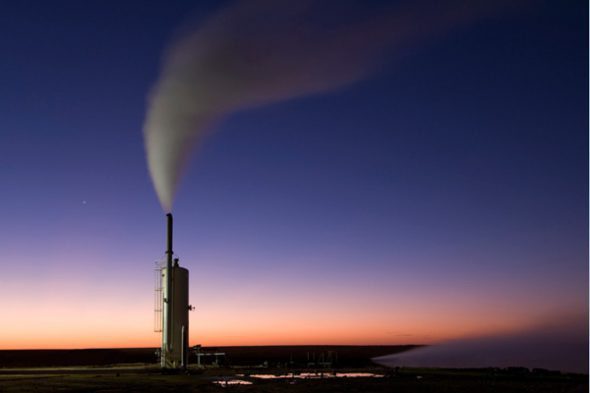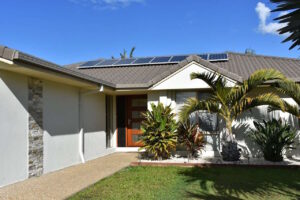It’s been a tough week for the geothermal industry. In fact, it’s been a tough year: the two biggest utility supporters, Energy Australia and Origin Energy, have walked away from the sector, and the share price of nearly all the stocks remains in the doldrums. Dreams have either been shattered, or put on hold.
Last week, the federal government’s Energy White paper officially downgraded the geothermal sector from its status of Great Clean Energy Hope to just another option in the middle distance.
Where once geothermal was expected to compete with wind for financing for projects before 2020 in the Renewable Energy Target, and in late 2011 was still predicted by the draft energy white paper to provide 23 per cent of the country’s electricity needs by 2050, now it is expected to be barely visible before 2020, and may only provide 9 per cent of total electricity by 2050.
Despite the fact that some $700 million has been spent on geothermal in the past decade, the only geothermal project producing electricity in Australia remains the 80kW Birdsville facility in Queensland, a shallow resource that has been running for the best part of two decades, and is so out of mind for the local utility that it gets the local baker to look after it.
Still, a 9 per cent forecast represents some optimism from the government forecasters that geothermal can and will deliver. This, of course, is shared by the industry itself, who say their greatest frustration has been a lack of opportunity. As members of the industry gathered this week in Sydney for the sector’s annual conference, the big question was how, and where does it go from here.
Geothermal’s big problem, according to Mark Elliott, the head of the ASX-listed Hot Rocks Ltd, is that over the past decade the industry has over-promised and under-delivered. “In Australia, investors are saying ‘we’ve really had enough’ and we’re having a lot of trouble convincing other parties to come in and co-develop projects.”

A glance at the graph of the share price of any listed geothermal stock underlines his point. Here’s Hot Rocks’ for example, since its stock exchange float in late 2007. It’s a catch-22 situation, because nearly all of the listed geothermal companies in Australia are now trading at less than 5c a share – which means their ability to raise capital – even to match government funds, is compromised.
Geothermal energy’s main barrier has been, and remains, its high up front costs. The budget for a basic drilling well lies between $10 and $15 million. The testing currently being conducted by Geodynamics, now just one of two companies active in Australia, at its Habanero 4 well in the Cooper Basin is costing $51 million.
That cost is higher than it might normally be, because of the extra care it is taking after the blowout of Hanabero 3, but the drilling, the flow tests and fracturing “stimulation” would normally cost $30 million in any case.
Cameron Huddlestone-Holmes, the geothermal energy stream leader at the CSIRO, notes that solar and wind energy resources can be easily identified, just by standing outside, but a geothermal resource is much harder to find. “And in the technology sense, you can build a small PV panel on your desktop, you can do a solar thermal thing in your backyard, but to demonstrate geothermal you’ve got to spend millions of dollars to drill a well,” he told RenewEconomy at the conference.
It is clear that the next round of funding will have to be largely supported by the government. Of the $700 million figure that has been spent, only $20 million has come from government, assistance for wells drilled by Geodynamics, Petratherm and Panax. Indeed, only 10 geothermal wells have been drilled in Australia.
It is also clear, however, that Greg Bourne, the chair of the newly formed Australian Renewable Energy Agency, with some $2.2 billion at its disposal to encourage emerging technologies, has borrowed his hard hat from his drilling days at BP Australia and is taking a hard-nosed attitude to the industry. As Bourne explained in this interview with RenewEconomy last week, and as he repeated to the geothermal confrence in Sydney on Wednesday, ARENA will not be funding drilling projects until more risk has been removed. Indeed, ARENA’s first ever funding decision was to put $1.25 million towards more research, and to absorb the lessons of recent drilling.
For company’s like Elliott’s, that probably means returning to data sources provided by the likes of the CSIRO and Geoscience Australia to firm up their prognosis as much as they can. Hot Rock wants to drill in Victoria’s Otway Basin for hot sedimentary aquifer resources, which Elliott argues should be easier and cheaper to exploit than the deeper, harder reserves in central Australia. Elliott says that upfront assistance will be critical to get project developers through the so-called “valley of death”. But getting wells drilled is the key to the industry. “As you know in the resources sector, we only need one discovery and it’ll be game on,” Elliott said.
But where there is a hole, there is hope.
It may not be quite “game on” at Geodynamics, but the positive results from its flow tests at the Habanero 4 well in the Cooper Basin confirms to CEO Geoff Ward that the industry has a strong future. However, given its upfront costs, and the changing dynamics of the energy market, and the lack of need for baseload generation of any sort over the coming decade, it does not have the luxury of choosing its moment.
Geodynamics will early next year begin producing electricity from a 1MW pilot plant near Innamincka. It will be a notable event: the first from enhanced geothermal systems (hot dry rocks) in Australia, and the first anywhere in the world sourcing energy from resources as deep and as hot, and technically challenging, as the Cooper Basin.
Once it’s done that, Ward says the company will prepare a plan to commercialise the technology and look for a customer for its first commercial demonstration plant, for which it has funding assistance from the federal government.
The chances are, however, that its first significant revenues could come from another form of geothermal energy, providing heat from shallower reserves in the Northern Territory to customers such as the massive Gove alumina refinery.
The refinery’s owners, Rio Tinto lamented the fact this year that Gove was being hit by the high cost of diesel fuel required for the steam for the refining process. Some estimates put that cost at a massive $400 million a year. Geodynamics in September formed a joint venture with Gulkula Mining, owned by the local Gumatj clan, to investigate its potential to supply heat to the refinery. Ward says it has real potential to reduce fuel oil consumption and carbon emissions at Gove, and to substantially reduce its operating costs.
Most of the other geothermal companies, however, are heading overseas – drawn to countries such as Indonesia, The Philippines, South America and the Pacific islands, where the geology is less complex, local electricity costs are high, and governments are willing to deliver firm power purchase agreements.
Hot Rock is one of those, looking at projects in both Peru and Chile. “A number of companies have moved their focus offshore,” Elliott notes, “looking at conventional volcanic geothermal systems, where there are much better returns, lower risks and much cheaper to develop.” A typically Australian story unfolds – always able to export its know-how, but struggling to find a way to deliver the goods in the home market.







